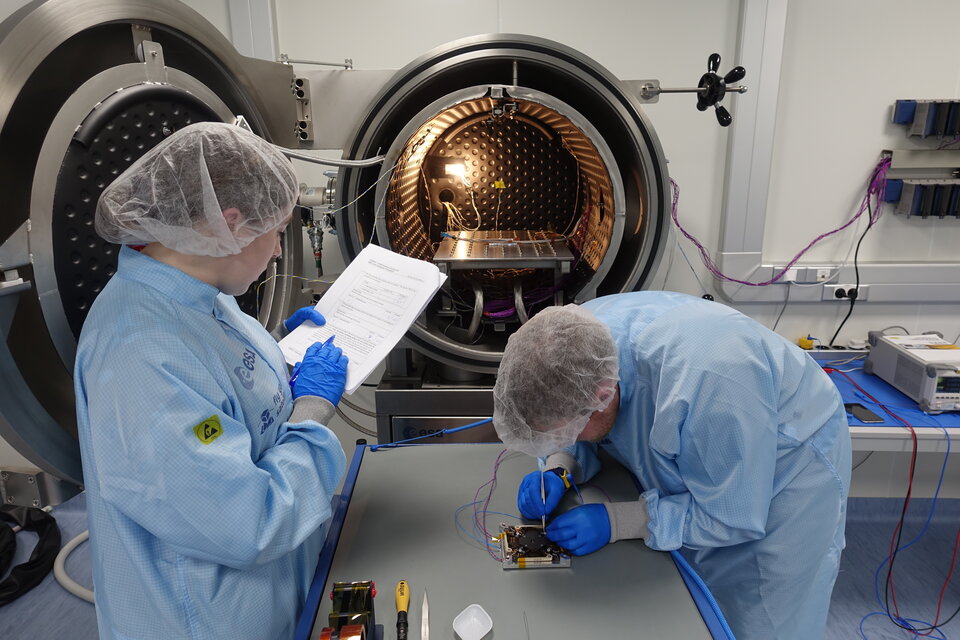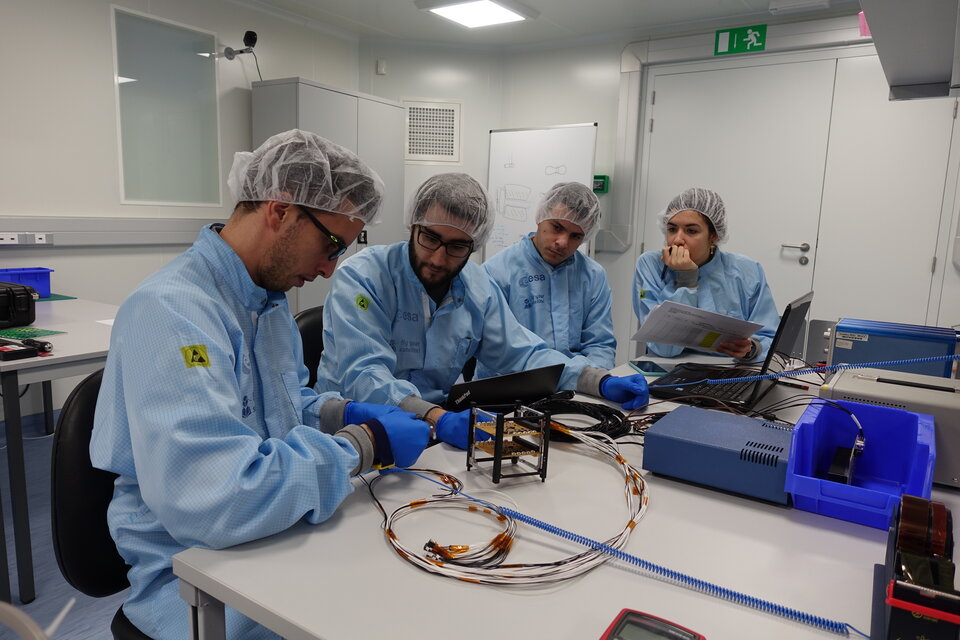Student CubeSats undergo testing at ESA Academy's CubeSat Support Facility
ESA’s Fly Your Satellite! programme is giving the next generation of scientists and engineers the chance to develop CubeSats and operate them in space. Two of the teams taking part in the second cycle of Fly Your Satellite!, EIRSAT-1 (University College Dublin) and LEDSAT (Sapienza University of Rome), have recently concluded testing activities for some of their nano-satellite subsystems, putting them one step closer to launch.
In November 2019, the EIRSAT-1 team travelled to the CubeSat Support Facility (CSF) at ESEC-Galaxia in Belgium to conduct vibration testing for the EMOD payload using an Electrodynamic Shaker. EMOD, a thermal coatings experiment, was shaken using a variety of vibration profiles in x, y, and z axis configurations, simulating the mechanical stresses that the equipment will endure during a real rocket launch into orbit. EMOD passed the success criteria to be qualified for launch.

Also, in November, the LEDSAT team performed environmental tests to some of their payload components. The LED controller boards were loaded into the CSF’s Electrodynamic Shaker to check for survivability to the vibrations of launch and in the Thermal-Vacuum Chamber for testing the electronic components and soldering in space-like conditions. As these same components will fly on-board the satellite, special care is needed to not over-stress the components. After each phase of testing, the team performed functional tests and inspections, including powering up the LED array. All tests were successful, and the boards were thus readied for assembly into the satellite.
The EIRSAT-1 team returned to ESEC-Galaxia in February 2020 to qualify additional equipment: the Gamma-ray burst detector Module (GMOD), and the Antenna Deployment Module (ADM) featuring the antenna elements. The equipment was stressed to higher levels than would be expected in reality, giving engineers confidence that the spacecraft design is capable of meeting the operational mission temperature, vacuum, and launch environments. The Electrodynamic Shaker and Thermal-Vacuum Chamber of the facility were used for the first time in parallel – requiring careful preparation from the students and the operators of the CSF. The EIRSAT-1 team was pleased with the results of this latest round of testing.

During testing campaigns at the CSF, students have the opportunity to draw on the experience of ESA experts to help them prepare and run the test campaigns. This supports the Fly Your Satellite! programme’s aim to enable ESA experts to share with students their knowledge and it allows students to perform industry-standard tests required for a successful mission.
To stay up-to-date with all the latest Fly Your Satellite! news, visit our website.


